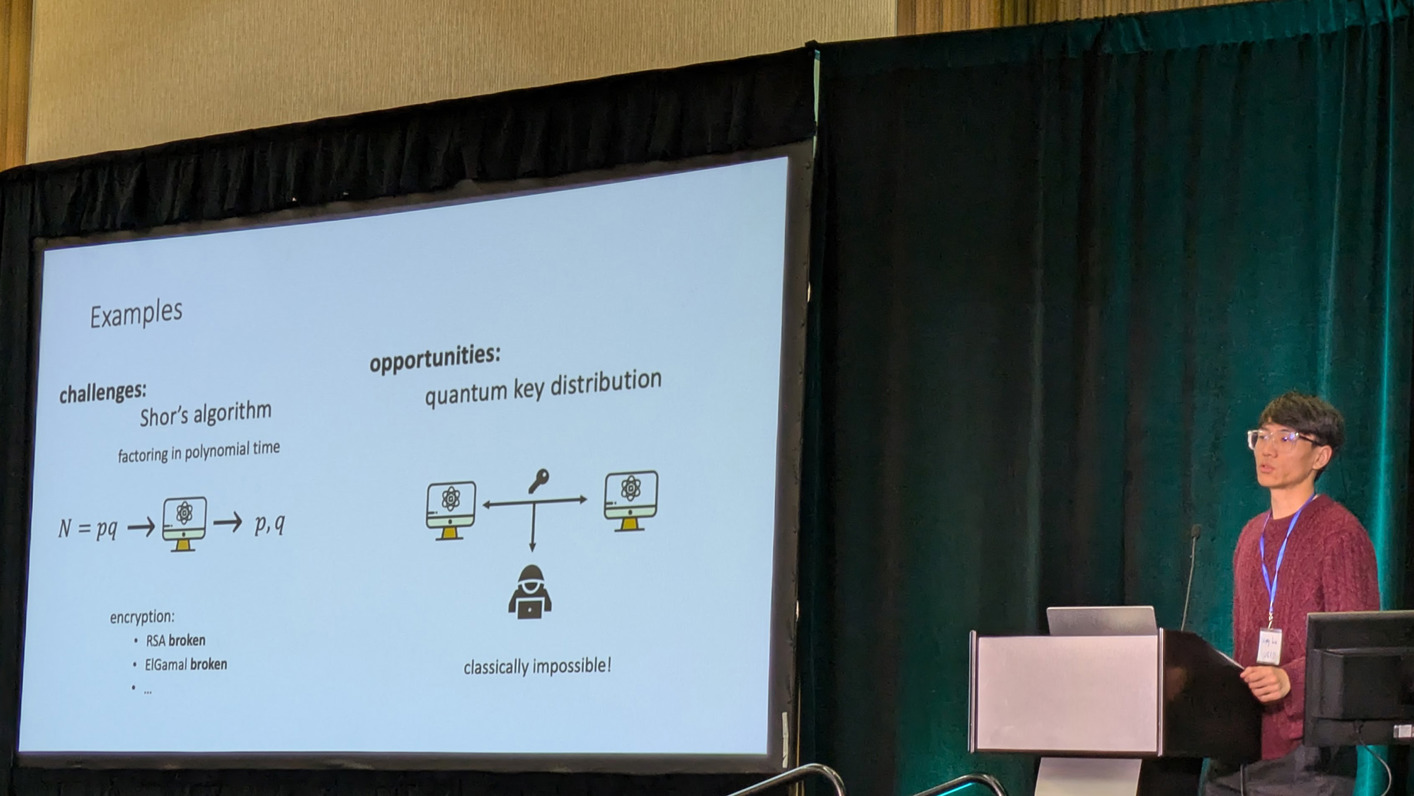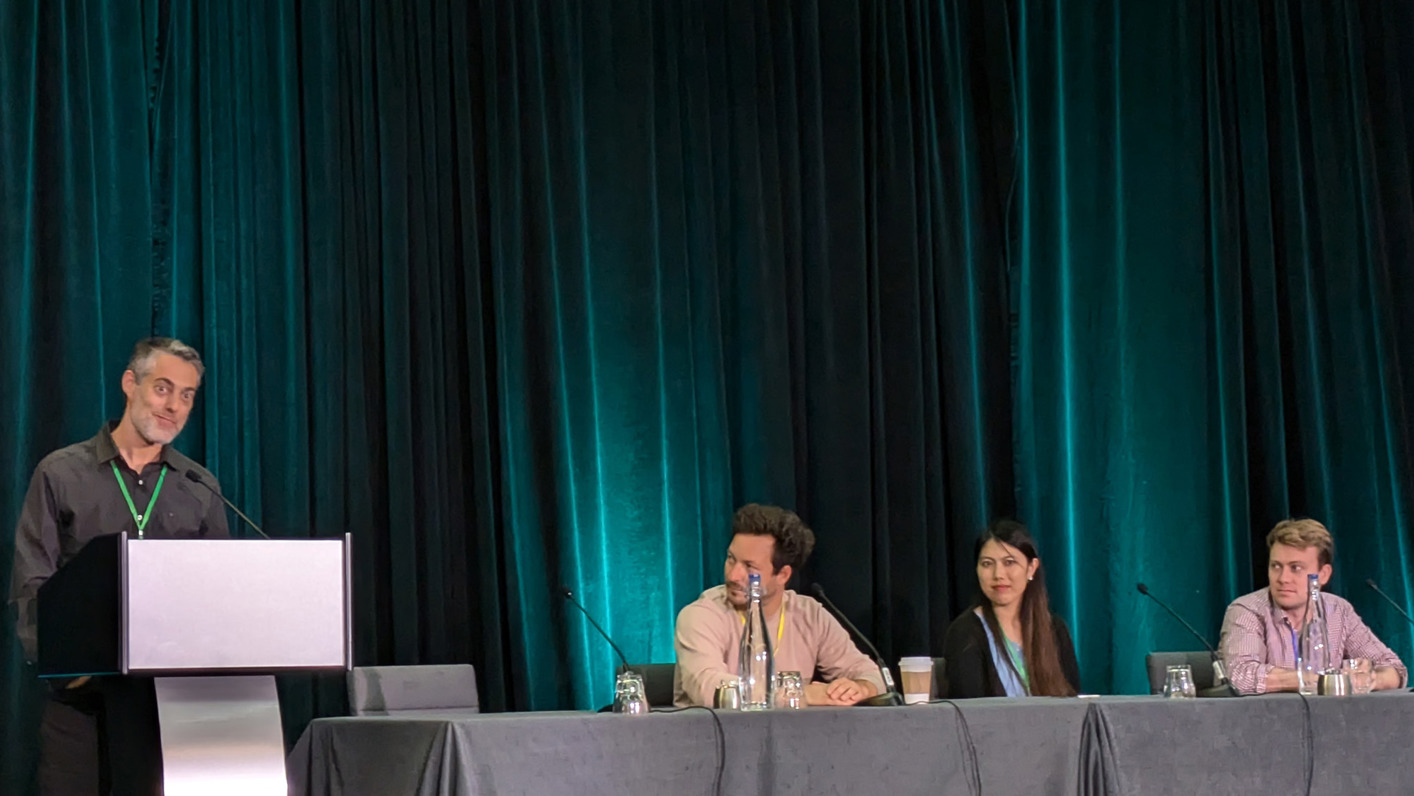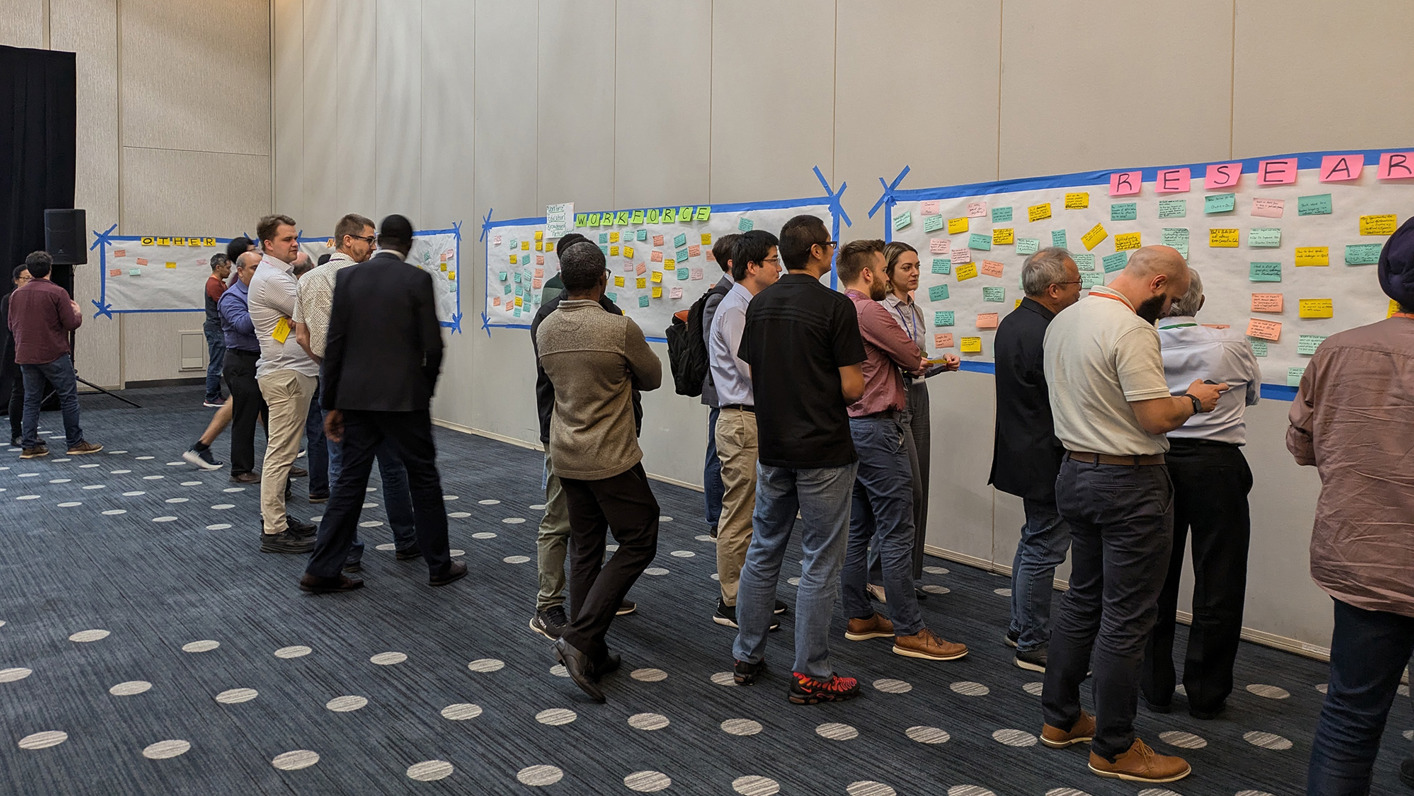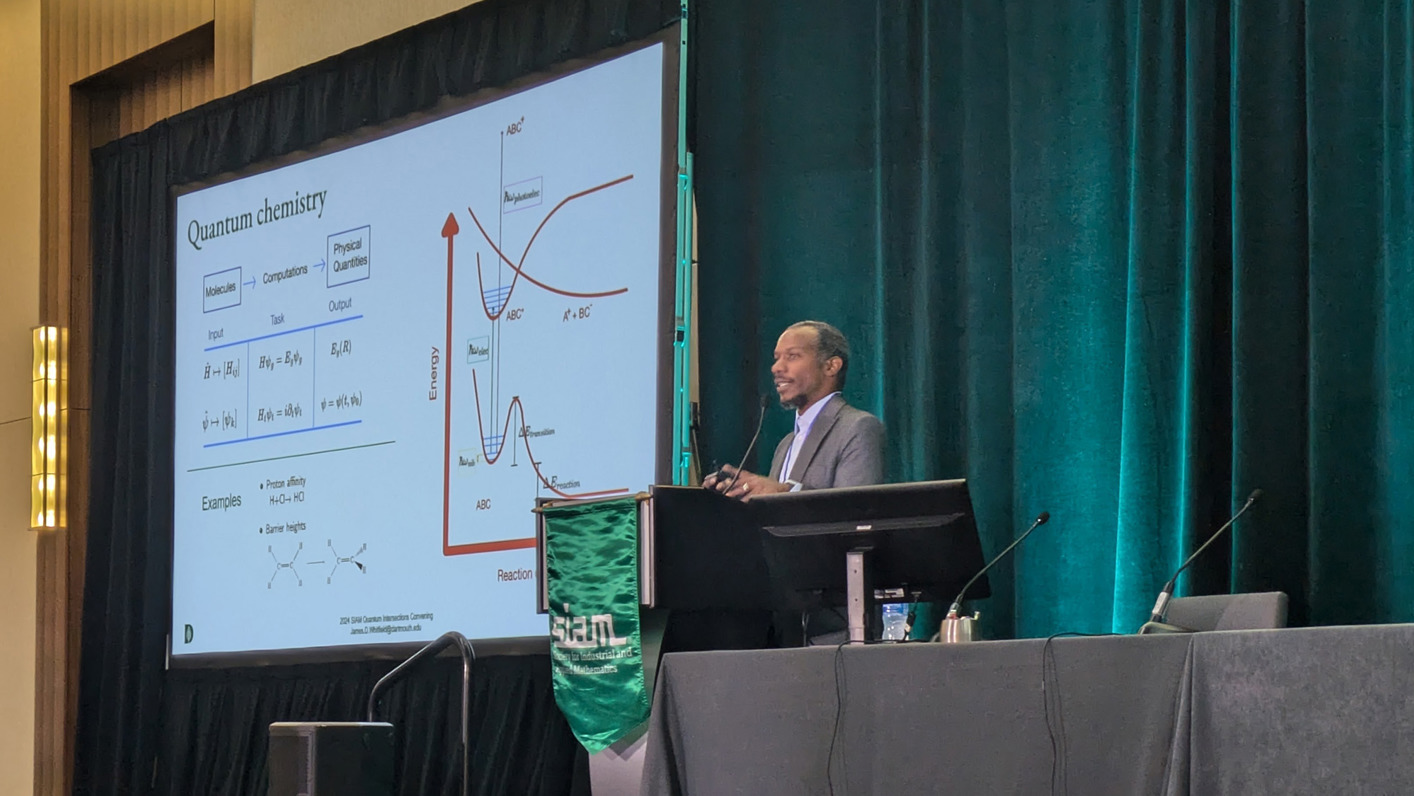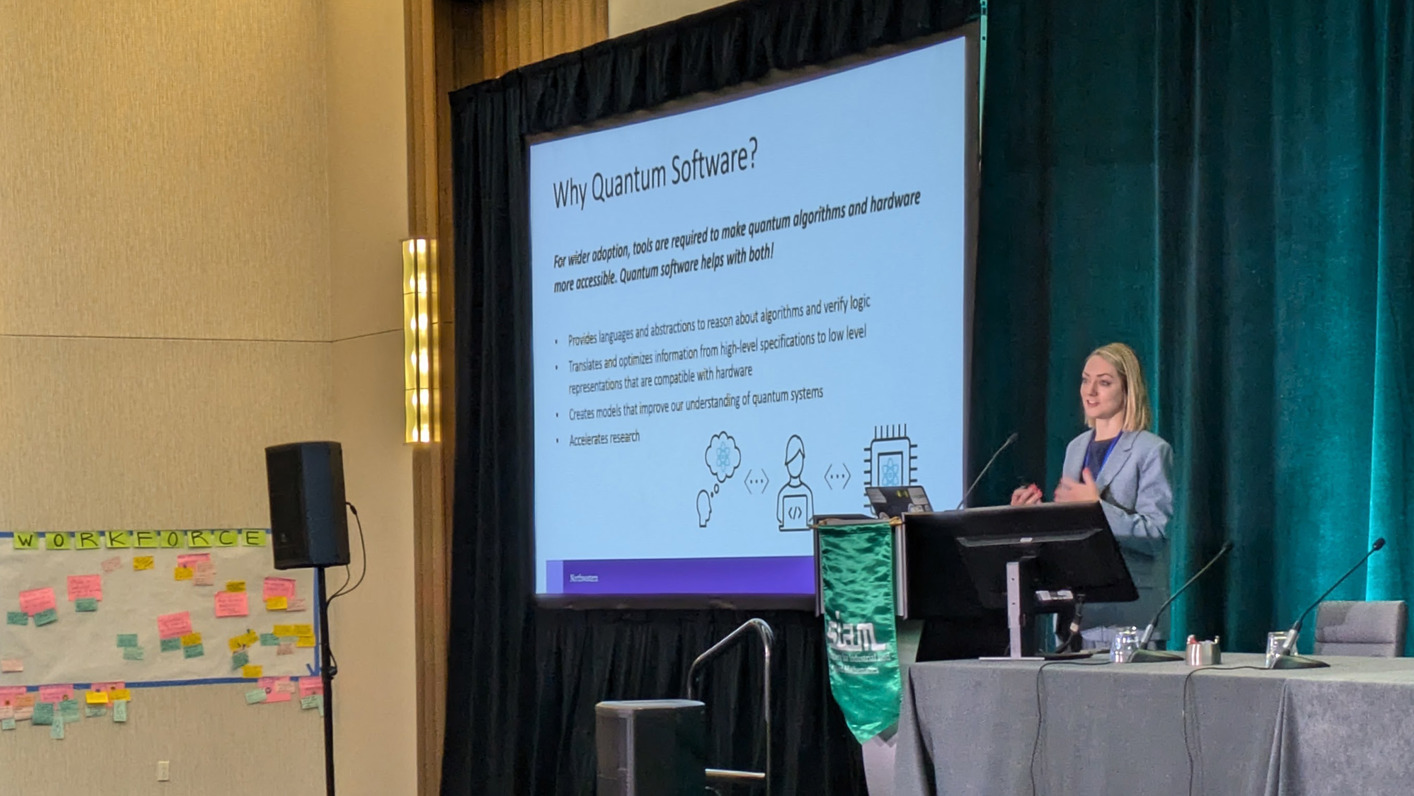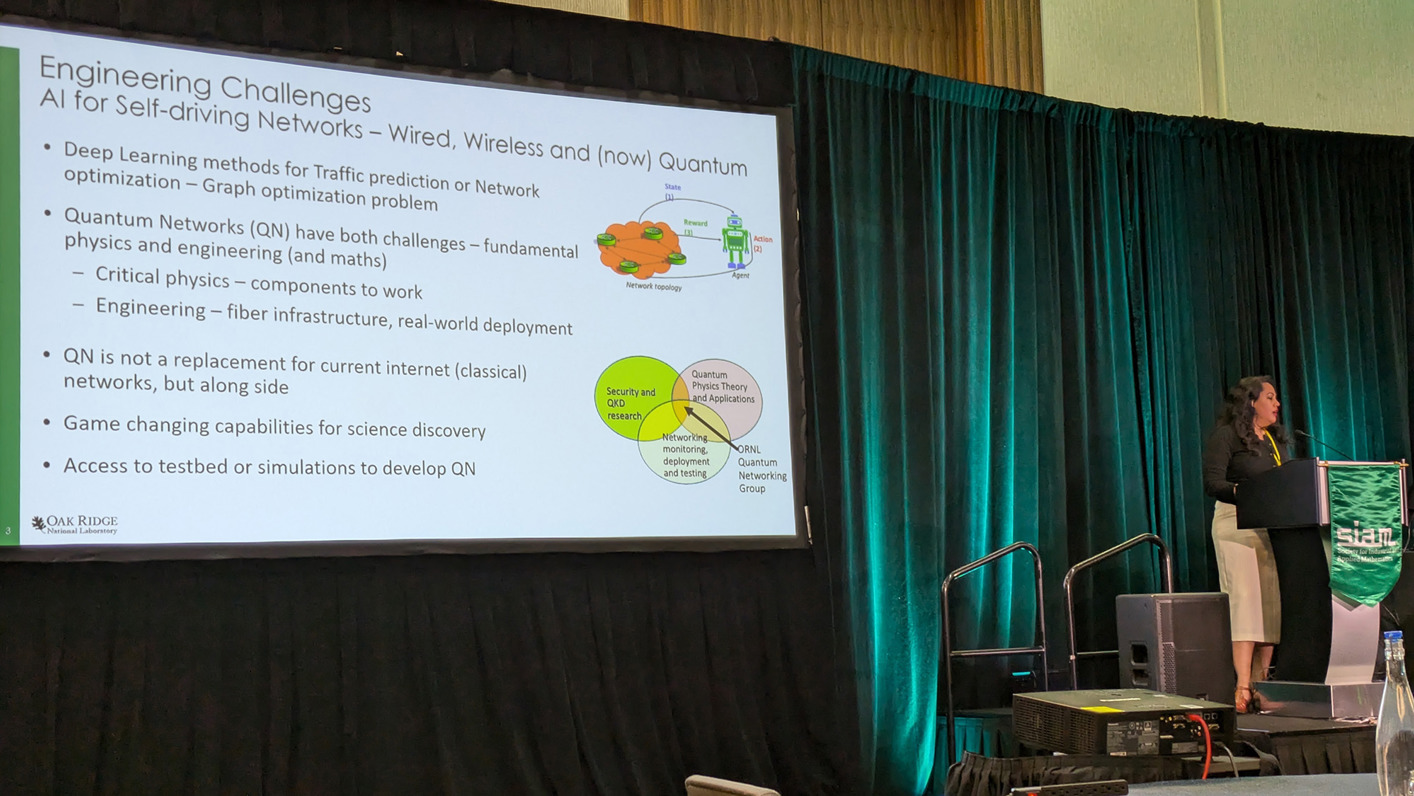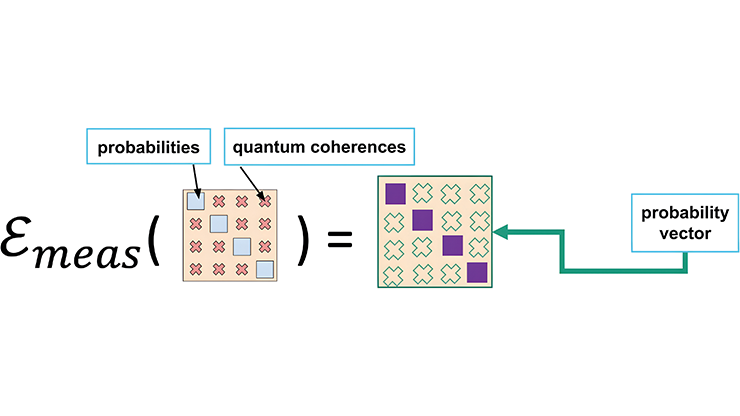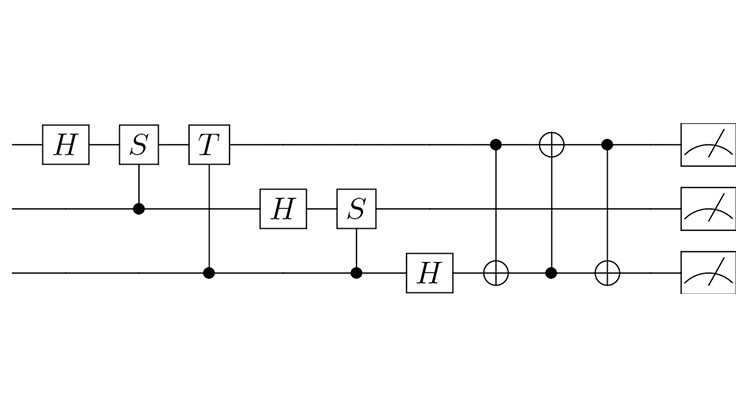Entangling Applied Mathematics and Quantum Science at the 2024 SIAM Quantum Intersections Convening
Earlier this week, a group of quantum-curious applied mathematicians gathered at the 2024 SIAM Quantum Intersections Convening to learn more about the interchange between these important fields. The three-day workshop—which took place from October 7-9 in Tysons, Va., and was funded by the U.S. National Science Foundation (NSF)—featured talks by quantum experts and ample opportunities for learning and discussion. The goal was to raise awareness of quantum pursuits to which mathematical scientists can contribute, increase participation in those research areas, forge new collaborations and partnerships, make recommendations for federal research and development agencies, and report these ideas to the broader applied mathematics community.
As participants arrived on Monday morning, they selected a lanyard that was color-coded based on their familiarity with quantum topics; pink represented quantum-curious novices, purple represented savvy quantum oracles, and orange represented a superposition between the two (for those with a medium level of quantum familiarity). Participants were encouraged to mix and mingle at different tables within the event space to interact with individuals across the spectrum of quantum knowledge. Professional facilitators from Knowinnovation (KI) kept the event running smoothly and urged attendees to meet new people and generate ideas. Each day boasted several presentations and/or panel discussions; after each session, tablemates discussed their takeaways based on their own experiences and expertise, used sticky notes and sharpies to articulate their thoughts about challenges and opportunities, and posted these notes on the walls of the event space. Attendees switched tables frequently to continue making fresh connections.
Suzanne Weekes, the chief executive officer of SIAM, welcomed everyone to the Convening on the first morning. David Manderscheid, director of the NSF Division of Mathematical Sciences, then delivered brief remarks about the true need and ardent desire for more mathematical expertise within quantum spaces. Alex Pothen of Purdue University followed with a stirring call to action that encouraged participants to consider how applied mathematicians could bring novel approaches to advance quantum technologies — and conversely, how quantum technologies could bring novel ideas to enrich applied mathematics.
The morning programming also featured a broad overview of quantum science from Bert de Jong of Lawrence Berkeley National Laboratory, who continued to assert the need for mathematicians in this space. Jacob Taylor of the National Institute of Standards and Technology (NIST) then discussed the National Quantum Initiative in the U.S., after which Miriam Quintal of Lewis-Burke Associates LLC—SIAM’s governmental relations partner in Washington, D.C.—offered a forward-looking perspective on opportunities for quantum research and workforce development at the federal level. Quintal urged the audience to imagine programs that could involve themselves or their students, leading to many interesting sticky note suggestions.
Following informal chats over lunch about the morning’s main takeaways, Jeffrey Larson of Argonne National Laboratory kicked off the afternoon with a brief teaser on quantum algorithms. He identified several key math areas for engagement—such as linear algebra, optimization, probability, and statistics—as well as some research problems to which applied mathematics could contribute, including algorithm design, error correction and mitigation, and modeling and simulation. Next, Michael Perlin of JPMorgan Chase established the objectives, challenges, and future directions of quantum error correction.
Qipeng Liu of the University of California, San Diego then introduced the field of quantum cryptography and explained security and countermeasures to adversarial attacks in the context of current and future quantum capabilities. Angela Robinson of NIST’s subsequent talk centered on the NIST post-quantum cryptography standardization project, which aims to refine cryptographic standards in response to improving quantum abilities; Robinson noted the mathematical expertise that is required to understand algorithm security.
The final session of the day was a panel discussion moderated by Lior Horesh of IBM, who led speakers Marcos Crichigno of Phasecraft, Alex Dalzell of the Amazon Web Services (AWS) Center for Quantum Computing, and Di Fang of Duke University in a down-to-earth conversation about areas where quantum will offer genuine advances and areas where it may currently be overhyped. The panelists’ insightful comments inspired the final creative coworking session of the day, as participants decided which sticky note topics were worthy of further exploration. Later that evening, attendees had the opportunity to chat with the speakers and panelists in a more intimate setting over dinner.
To jumpstart the second day of activities, Dalzell overviewed the large, eclectic field of quantum machine learning and shared ways in which applied mathematicians can contribute to outstanding technical questions. James Whitfield of Dartmouth College and AWS then provided some background on quantum chemistry, with additional thoughts about quantum primacy. In the final talk of the morning, Ruslan Shaydulin of JPMorgan Chase gave a broad overview of the capabilities and speedups that quantum computers can offer for quantum optimization problems.
After lunch, Kirk Jordan of IBM moderated an industry panel that comprised Crichigno, Shaydulin, and Mariam Kiran of Oak Ridge National Laboratory. The panelists discussed their respective organizations’ interests and motivations for investments in quantum computing, relevant training and educational experiences for quantum roles, and the advantages and challenges of working in mission-oriented settings.
Participants egressed for a quick walk in the Tysons Corner Center plaza to casually converse with new acquaintances, then returned to the meeting room for a panel about quantum education and workforce initiatives. Bashir Mohammed of Intel led Emily Edwards of Duke University (who co-leads the National Q-12 Education Partnership) and Saif Rayyan of IBM in a discussion about technical skill-building from early education onwards. After the panel, Convening attendees reflected on the astute perceptions and suggestions from the speakers throughout the day, added additional sticky notes to the wall of ideas, and clustered the most exciting concepts into broad categories. Teams of two to four people then coalesced to write short documents that defined the relevant challenge or opportunity, made suggestions to address it, and explained how their recommendations could improve upon current practices; many discussions lasted well into the evening.
David Hyde of Vanderbilt University led off the event’s final day with a quick introduction to quantum circuits. Kate Smith of Northwestern University then delivered a primer on quantum software and compilers—which make quantum algorithms and hardware more accessible for wider adoption—and highlighted numerous opportunities for multidisciplinary engagements. Kiran then spoke about quantum communications and networking, which is a similarly multidisciplinary challenge in the fields of mathematics, computer science, physics, and engineering. She looked forward to a future in which quantum networks could function alongside current classical networks.
After polishing recommendations from the previous day, attendees formed new groups and worked on additional descriptions of opportunities and challenges in quantum and math. Concurrently with this continuing collaboration, Hyde led a demonstration on Qiskit: a quantum software development kit from IBM. The demo’s first coding exercise focused on a simple quantum circuit, after which Hyde moved forward to show an example of Grover’s algorithm.
As the Convening drew to a close, Weekes acknowledged the steering committee and KI facilitators for their work to successfully bring the event to fruition. Finally, she thanked the participants for their dedicated efforts to enhance their knowledge of quantum science, cross-pollinate ideas with experts across different fields, and collaboratively develop recommendations to bring mathematical expertise into the fold of quantum research. And while the workshop itself is over, the work is not yet done. Videos of the presentations and other resources will soon be made publicly available on the SIAM website, and the attendees’ recommendations will be further refined to ultimately produce a document for the NSF and other federal agencies. We look forward to the future collaborations, programs, and research initiatives that the 2024 SIAM Quantum Intersections Convening will ultimately produce.
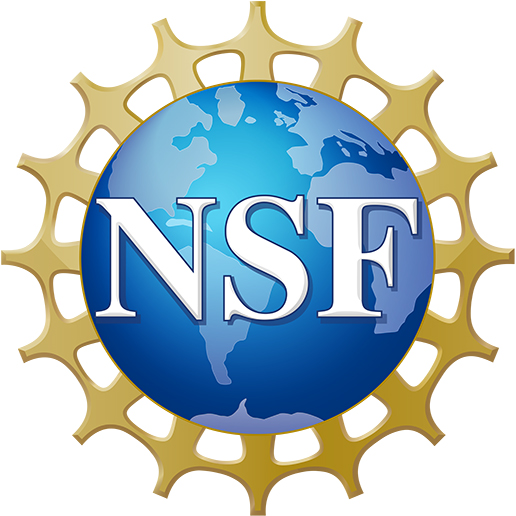
The 2024 SIAM Quantum Intersections Convening was funded by the U.S. National Science Foundation under award DMS-2425995.
About the Author
Jillian Kunze
Master's student, Drexel University
Jillian Kunze is the former associate editor of SIAM News. She is currently a master’s student in data science at Drexel University.
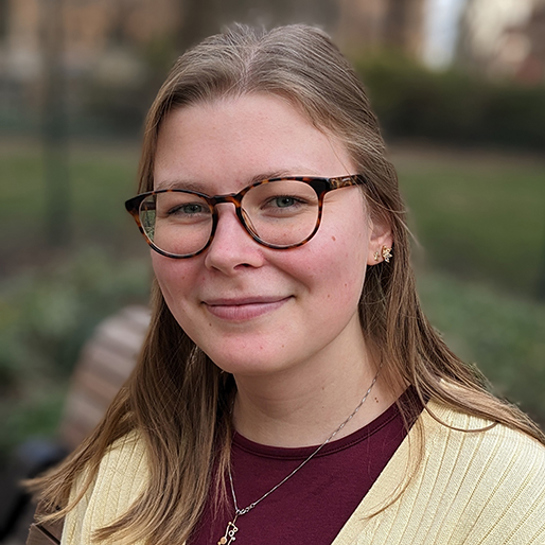
Related Reading
Stay Up-to-Date with Email Alerts
Sign up for our monthly newsletter and emails about other topics of your choosing.





